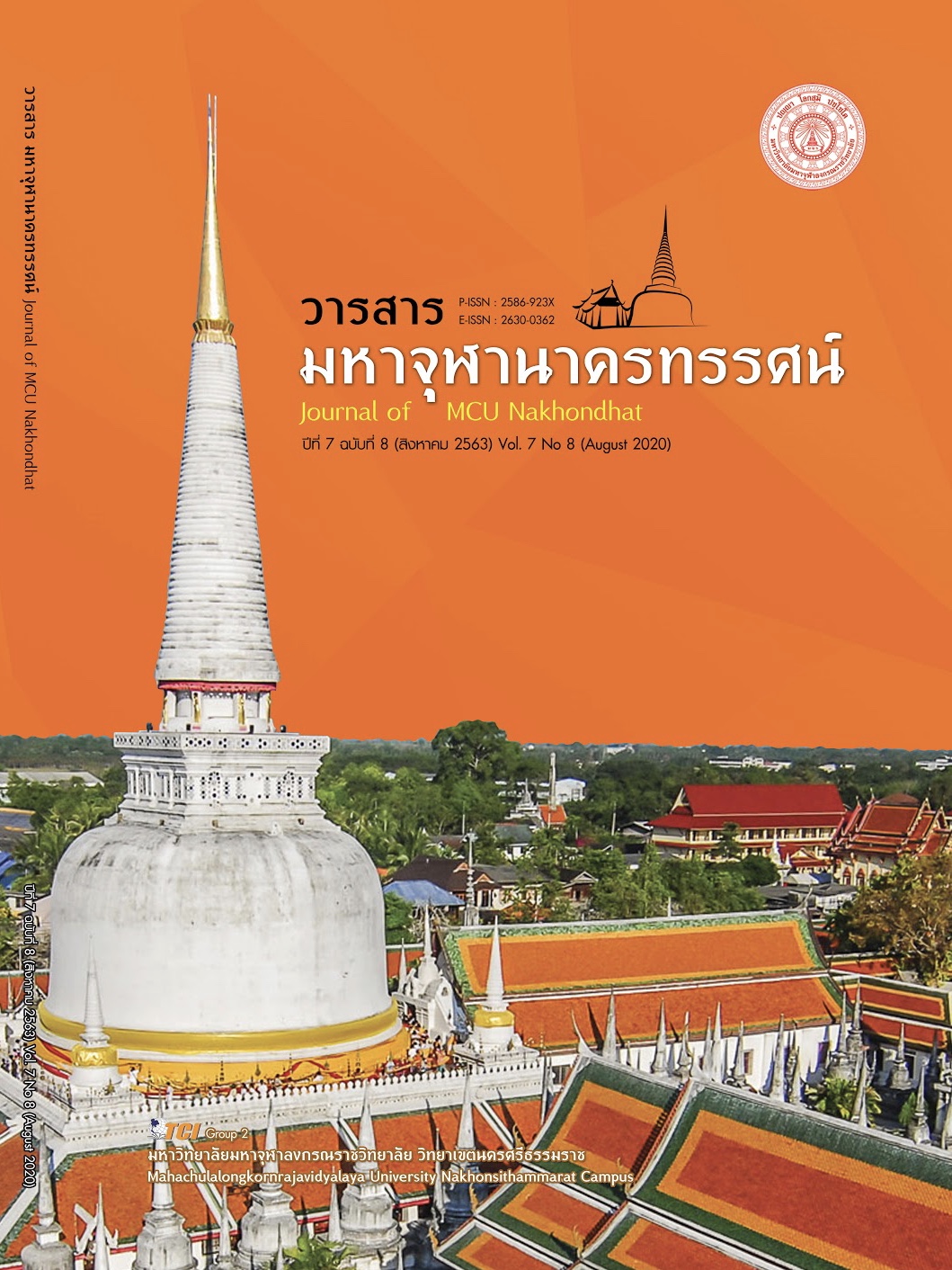THE COMMUNICATION OF KHON TAM ASSOCIATION IN MUN RIVER CONSERVATION
Main Article Content
Abstract
This recent thesis ‘The Communication of Khon Tham Association in Mun River Conservation’ analyzed social context, attitude, process, communication method, topic, and communication contents (Textual Analysis) received from Khon Tham Association’s works, The research aimed to study the communication of Khon Tham Association in Mun River Conservation and problems as well as limitations in their communition. The results have shown that Khon Tham Association’s communication model in conserving Mun River was consisted of 1) messenger, 2) message, 3) channel and 4) receiver) The messengers had precise information, knowledge of the local area, and understanding their issues, and they also could explain changes happening to local people in Mun River, social context, ecosystem, and the variety of plants in Tham forest around Mun River. Massage receiver groups were separated into 3 groups: the first group was local people who influenced the attitudes; the second group was message receivers who really wanted information and were really open to that information; and the third group was the one who was open to some contents. The people in this group had different basic understanding sent out by the Association, and it may create the errors in the perception between the messenger and message receiver higher than other group. Problems and limitations of the communication of Khon Tham Association in Mun River Conservation are to create the materials that are corresponding to the needs and the accessibility of different groups of people by considering relationship plan between people. By considering this difference, it can show joining point or different point due to that person’s society, which affects the creation of the same perception, the limitation of human resource, materials for creating media, sufficient budget, including the procedure in developing new generation of messenger that can take time and step – by – step development.
Article Details
References
จุมพล หนิมพานิช. (2556). สิทธิชุมชนในการเคลื่อนไหวเพื่อการจัดการทรัพยากรที่ดิน ป่า และน้ำที่ยั่งยืน: กรณีศึกษาขบวนการเคลื่อนไหวทางสังคมแนวใหม่ในภาคตะวันออกเฉียงเหนือในช่วง 2531 – 2553. วารสารสุโขทัยธรรมาธิราช, 31(1), 58–70.
ไชยรัตน์ เจริญสินโอฬาร. (2540). ขบวนการเคลื่อนไหวทางสังคมรูปแบบใหม่/ขบวนการเคลื่อนไหวประชาสังคมในต่างประเทศ: บทสำรวจพัฒนาการสถานภาพและนัยยะเชิงความคิด/ทฤษฎีต่อการพัฒนาประชาธิปไตย. (พิมพ์ครั้งที่ 1). กรุงเทพมหานคร: ศูนย์วิจัยและผลิตตำรามหาวิทยาลัยเกริก.
ดำรงศักดิ์ จันทร์วิไล และวราลักษณ์ ไชยทัพ. (2561). ป่าทาม ป่าไทย วิถีชีวิต คุณค่าและการเปลี่ยนแปลงของพื้นที่ชุ่มน้ำอีสาน. กรุงเทพมหานคร: บจก.เอที วัฒนาเอ็นจิเนียริ่ง แอนด์ ซัพพลาย ร่วมกับส. ไพบูลย์การพิมพ์.
ปฐม หงส์สุวรรณ. (2557). ดงภูดิน: เรื่องเล่าศักดิ์สิทธิ์กับปฏิบัติการสร้างความหมายว่าด้วยสิทธิชุมชน. วารสารสังคมลุ่มน้ำโขง, 10(3), 167–192.
ปาจารีย์ พวงศรี. (2555). การสื่อสารผ่านพื้นที่สาธารณะของคนชายขอบในรายการนักข่าวพลเมือง สถานีโทรทัศน์ไทยพีบีเอส. ใน วิทยานิพนธ์วารสารศาสตรมหาบัณฑิต สาขาวิชาสื่อสารมวลชน. มหาวิทยาลัยธรรมศาสตร์.
วรวิทย์ ไชยทอง. (2553). พลวัตการเคลื่อนไหวด้านการอนุรักษ์สิ่งแวดล้อมในสังคมไทย: ข้อสังเกตเชิงอุดมการณ์. เรียกใช้เมื่อ 25 กรกฎาคม 2561 จาก https://armworawit.wordpress.com
สุวิดา ธรรมมณีวงค์. (2544). การเคลื่อนไหวทางสังคม. วารสารอักษรศาสตร์ มหาวิทยาลัยศิลปากร, 23(2), 32–54.
อุบลรัตน์ ศิริยุวศักดิ์ และคณะ. (2547). สื่อสารมวลชนเบื้องต้น สื่อมวลชน วัฒนธรรม และสังคม. (พิมพ์ครั้งที่ 4). กรุงเทพมหานคร: โรงพิมพ์แห่งจุฬาลงกรณ์มหาวิทยาลัย.
ไอยรา สังฆะ. (2553). ปฏิบัติการอารยะขัดขืนของขบวนการต่อต้านเขื่อนราศีไศล. ใน วิทยานิพนธ์รัฐศาสตรมหาบัณฑิต สาขาวิชาการปกครอง. จุฬาลงกรณ์มหาวิทยาลัย.


